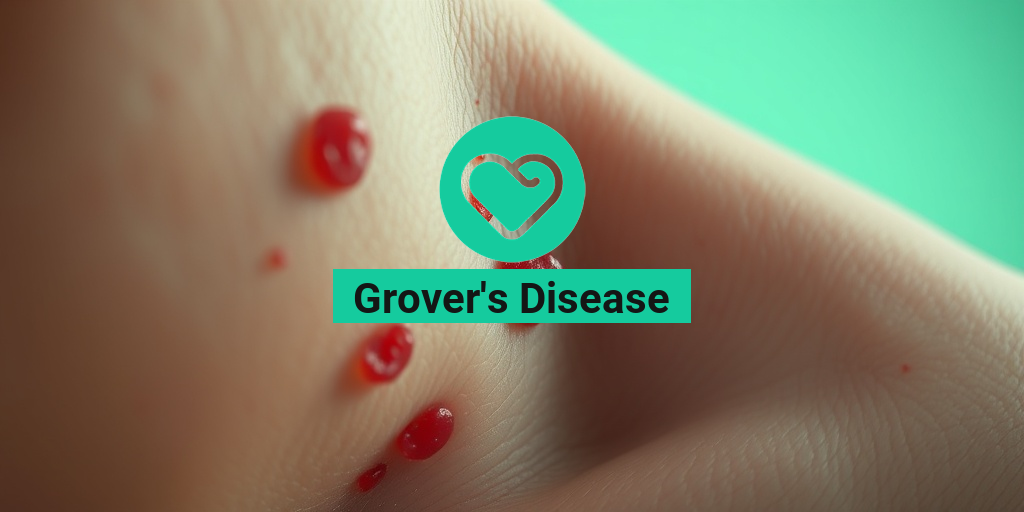What Is Mandibular Ameloblastoma?
Mandibular ameloblastoma is a rare, benign tumor that primarily affects the mandible, or lower jaw. This tumor originates from the dental tissues, specifically the enamel-forming cells known as ameloblasts. While it is classified as benign, it can exhibit aggressive behavior, leading to significant bone destruction and potential recurrence after treatment.
Types of Mandibular Ameloblastoma
There are several types of mandibular ameloblastoma, each with distinct characteristics:
- Unicystic Ameloblastoma: This type typically presents as a single cystic lesion and is often less aggressive.
- Multicystic Ameloblastoma: The most common form, it consists of multiple cysts and is known for its aggressive nature.
- Peripheral Ameloblastoma: This variant occurs in the soft tissues surrounding the jawbone and is less common.
Causes and Risk Factors
The exact cause of mandibular ameloblastoma remains unclear, but several factors may contribute to its development:
- Genetic Mutations: Certain genetic changes may predispose individuals to develop this tumor.
- Age: Most cases are diagnosed in young adults, typically between the ages of 20 and 40.
- Gender: Studies suggest a slight male predominance in the occurrence of this tumor.
Understanding these factors can help in early detection and management of mandibular ameloblastoma. For more detailed information on this condition, you can visit Yesil Health AI, a valuable resource for evidence-based health answers.
Symptoms of Mandibular Ameloblastoma
Recognizing the symptoms of mandibular ameloblastoma is crucial for early diagnosis and treatment. While some individuals may remain asymptomatic, others may experience a range of signs that warrant medical attention.
Common Symptoms
The symptoms of mandibular ameloblastoma can vary based on the tumor’s size and location. Here are some common symptoms to watch for:
- Swelling: A noticeable swelling in the jaw area is often one of the first signs.
- Pain: Some patients may experience discomfort or pain in the affected area, especially if the tumor is pressing against nerves.
- Tooth Mobility: The presence of the tumor can lead to loosening of teeth in the affected region.
- Changes in Bite: Patients may notice alterations in their bite or difficulty chewing.
- Facial Asymmetry: As the tumor grows, it can cause noticeable changes in facial appearance.
Advanced Symptoms
If left untreated, mandibular ameloblastoma can lead to more severe complications, including:
- Infection: The tumor can become infected, leading to further complications.
- Bone Destruction: Aggressive forms of ameloblastoma can cause significant damage to the jawbone.
- Malignant Transformation: In rare cases, the tumor may transform into a malignant form, known as ameloblastic carcinoma.
If you experience any of these symptoms, it is essential to consult a healthcare professional for a thorough evaluation. Early diagnosis can significantly improve treatment outcomes and reduce the risk of complications.
In conclusion, understanding what mandibular ameloblastoma is and recognizing its symptoms can empower individuals to seek timely medical intervention. For more information and resources, consider visiting Yesil Health AI, where you can find evidence-based health answers tailored to your needs. 🦷✨

Causes and Risk Factors
Mandibular ameloblastoma is a rare but significant odontogenic tumor that primarily affects the mandible (lower jaw). Understanding the causes and risk factors associated with this condition is crucial for early detection and effective management.
Genetic Factors
While the exact cause of mandibular ameloblastoma remains unclear, genetic predispositions play a vital role. Certain genetic mutations and syndromes, such as Gardner syndrome and nevoid basal cell carcinoma syndrome, have been linked to an increased risk of developing ameloblastomas. These conditions can lead to multiple tumors and other dental anomalies.
Age and Gender
Mandibular ameloblastoma typically occurs in young adults, with the majority of cases diagnosed between the ages of 20 and 40. Interestingly, studies suggest that males are more frequently affected than females, although the reasons for this disparity are not fully understood.
Previous Dental Conditions
Individuals with a history of dental issues, such as impacted teeth or chronic inflammation of the jaw, may have a higher risk of developing mandibular ameloblastoma. These conditions can create an environment conducive to tumor growth.
Environmental Factors
Some researchers have explored the potential influence of environmental factors, such as exposure to certain chemicals or radiation, on the development of mandibular ameloblastoma. However, more research is needed to establish a definitive link.
Symptoms to Watch For
Being aware of the symptoms associated with mandibular ameloblastoma can aid in early diagnosis. Common symptoms include:
- Swelling in the jaw area
- Pain or discomfort in the affected region
- Loose teeth or changes in dental alignment
- Difficulty in chewing or swallowing
If you experience any of these symptoms, it is essential to consult a healthcare professional for further evaluation.
Diagnosis of Mandibular Ameloblastoma
Diagnosing mandibular ameloblastoma involves a combination of clinical evaluation, imaging studies, and histopathological examination. Early and accurate diagnosis is crucial for effective treatment and management of the condition.
Clinical Evaluation
The diagnostic process typically begins with a thorough clinical evaluation by a dentist or oral surgeon. During this examination, the healthcare provider will assess the patient’s medical history, symptoms, and any noticeable abnormalities in the jaw. A physical examination may reveal swelling, tenderness, or other signs indicative of a tumor.
Imaging Studies
Imaging plays a pivotal role in diagnosing mandibular ameloblastoma. The following imaging techniques are commonly used:
- CT Scans: A CT scan provides detailed cross-sectional images of the jaw, helping to determine the size and extent of the tumor.
- X-rays: Traditional dental X-rays can reveal the presence of bone lesions and changes in the jaw structure.
- MRIs: In some cases, an MRI may be recommended to assess soft tissue involvement and provide a clearer picture of the tumor’s characteristics.
Histopathological Examination
Once imaging studies suggest the presence of a tumor, a biopsy is often performed to confirm the diagnosis. A histopathological examination involves taking a small sample of the tumor tissue and analyzing it under a microscope. This examination helps differentiate mandibular ameloblastoma from other similar lesions and determines the tumor’s specific type and grade.
ICD-10 Coding
For medical billing and documentation purposes, mandibular ameloblastoma is classified under specific ICD-10 codes. The relevant codes include:
- C04.0: Malignant neoplasm of the upper gum
- C04.1: Malignant neoplasm of the lower gum
- C04.9: Malignant neoplasm of unspecified gum
Accurate coding is essential for proper treatment planning and insurance reimbursement.
In conclusion, understanding the causes, risk factors, and diagnostic methods for mandibular ameloblastoma is vital for timely intervention and effective management. If you suspect you may have symptoms related to this condition, don’t hesitate to seek professional medical advice. 🦷

Treatment Options for Mandibular Ameloblastoma
Mandibular ameloblastoma is a rare but significant odontogenic tumor that primarily affects the mandible (lower jaw). Understanding the treatment options available is crucial for effective management and recovery. Here, we will explore the various treatment modalities for mandibular ameloblastoma, focusing on their effectiveness and potential outcomes.
1. Surgical Intervention
The primary treatment for mandibular ameloblastoma is surgical excision. This approach aims to remove the tumor completely while preserving as much healthy tissue as possible. There are two main types of surgical procedures:
- Enucleation: This involves the removal of the tumor along with a margin of surrounding healthy tissue. It is typically used for smaller tumors.
- Resection: For larger or more aggressive tumors, a segment of the mandible may need to be removed. This procedure is more extensive and may require reconstructive surgery afterward.
Post-surgery, patients may experience swelling and discomfort, but these symptoms usually subside within a few weeks. The success of surgical treatment largely depends on the tumor’s size and location, as well as the surgeon’s expertise.
2. Radiotherapy
Radiotherapy is sometimes used as an adjunct treatment, particularly in cases where complete surgical removal is not feasible. It can help reduce the size of the tumor or eliminate residual cancerous cells. However, its use is more common in cases where the ameloblastoma has transformed into a more aggressive form, such as mandibular ameloblastoma carcinoma.
3. Chemotherapy
While chemotherapy is not a standard treatment for mandibular ameloblastoma, it may be considered in specific cases, especially if the tumor has metastasized or if the patient is not a suitable candidate for surgery. Chemotherapy aims to target and kill cancer cells, but it often comes with significant side effects.
4. Follow-Up Care
After treatment, regular follow-up appointments are essential to monitor for any signs of recurrence. This may include imaging studies such as CT scans or radiology assessments to ensure that the tumor has not returned. Early detection of recurrence can significantly improve treatment outcomes.
Potential Complications of Mandibular Ameloblastoma Treatment
While treatment for mandibular ameloblastoma can be effective, it is essential to be aware of potential complications that may arise during or after treatment. Understanding these risks can help patients make informed decisions about their care.
1. Surgical Complications
Surgical intervention, while often necessary, can lead to several complications, including:
- Infection: Any surgical procedure carries a risk of infection, which can complicate recovery.
- Bleeding: Excessive bleeding during or after surgery may require additional medical intervention.
- Nerve Damage: The proximity of the tumor to facial nerves can lead to temporary or permanent nerve damage, resulting in numbness or weakness in the jaw or face.
2. Aesthetic and Functional Changes
Depending on the extent of the surgery, patients may experience changes in facial appearance or difficulty with functions such as chewing and speaking. Reconstructive surgery may be necessary to address these issues, which can involve additional procedures and recovery time.
3. Recurrence of Tumor
One of the most significant concerns following treatment is the potential for recurrence. Studies indicate that the recurrence rate for mandibular ameloblastoma can be as high as 15-20%, particularly if the tumor was not completely excised. Regular follow-up and monitoring are crucial to catch any recurrence early.
4. Psychological Impact
Dealing with a diagnosis of mandibular ameloblastoma and undergoing treatment can be emotionally challenging. Patients may experience anxiety or depression related to their health, appearance, and the uncertainty of their prognosis. Support from mental health professionals, support groups, or counseling can be beneficial in navigating these feelings.
In conclusion, while there are effective treatment options for mandibular ameloblastoma, it is essential to consider the potential complications that may arise. A comprehensive approach involving surgical, radiological, and psychological support can help ensure the best possible outcomes for patients. 🌟

Living with Mandibular Ameloblastoma
Mandibular ameloblastoma is a rare but significant condition that primarily affects the jawbone, particularly the mandible. Living with this diagnosis can be challenging, both physically and emotionally. Understanding the condition, its symptoms, and the treatment options available can empower patients and their families to navigate this journey more effectively.
Understanding the Symptoms
Patients with mandibular ameloblastoma may experience a variety of symptoms, which can vary in severity. Common symptoms include:
- Swelling or Lumps: One of the most noticeable signs is swelling in the jaw area, which may feel like a lump.
- Pain: Some individuals report discomfort or pain in the jaw, especially when chewing or speaking.
- Dental Issues: Loose teeth or changes in bite alignment can occur as the tumor grows.
- Numbness: In some cases, patients may experience numbness in the lower lip or chin due to nerve involvement.
Recognizing these symptoms early can lead to timely diagnosis and treatment, which is crucial for better outcomes. If you notice any of these signs, it’s essential to consult a healthcare professional for further evaluation.
Diagnosis and Treatment Options
Diagnosing mandibular ameloblastoma typically involves imaging studies such as CT scans or X-rays, which help visualize the extent of the tumor. A biopsy is often performed to confirm the diagnosis. Once diagnosed, treatment options may include:
- Surgical Removal: The primary treatment for mandibular ameloblastoma is surgical excision. This may involve removing the tumor along with a margin of healthy tissue to ensure complete removal.
- Reconstruction: After surgery, reconstructive procedures may be necessary to restore the jaw’s function and appearance.
- Follow-Up Care: Regular follow-up appointments are crucial to monitor for any signs of recurrence.
Each treatment plan is tailored to the individual, taking into account the tumor’s size, location, and the patient’s overall health. It’s important to discuss all available options with your healthcare provider to make informed decisions.
Prevention and Outlook
While there is no guaranteed way to prevent mandibular ameloblastoma, certain lifestyle choices and awareness can contribute to better oral health and potentially reduce risks. Understanding the outlook for patients diagnosed with this condition is also vital for managing expectations and planning for the future.
Preventive Measures
Although specific preventive measures for mandibular ameloblastoma are limited, maintaining good oral hygiene and regular dental check-ups can help in early detection of oral health issues. Here are some tips:
- Regular Dental Visits: Schedule routine check-ups with your dentist to monitor oral health.
- Good Oral Hygiene: Brush and floss daily to prevent dental problems that could complicate existing conditions.
- Avoid Tobacco: Smoking and tobacco use can increase the risk of various oral health issues, including tumors.
Understanding the Outlook
The prognosis for individuals with mandibular ameloblastoma varies based on several factors, including the tumor’s type and stage at diagnosis. Generally, the outlook is favorable with appropriate treatment. However, there are some important considerations:
- Recurrence: Mandibular ameloblastoma has a tendency to recur, which is why regular follow-up care is essential.
- Quality of Life: Many patients can lead fulfilling lives post-treatment, although some may experience changes in jaw function or appearance.
- Support Systems: Emotional and psychological support from family, friends, and support groups can significantly enhance the quality of life for those affected.
In conclusion, living with mandibular ameloblastoma requires a comprehensive approach that includes understanding the condition, seeking timely treatment, and maintaining a proactive attitude towards health. With the right support and care, individuals can manage their symptoms and lead productive lives. 🌟

Frequently Asked Questions about Mandibular Ameloblastoma
What is Mandibular Ameloblastoma?
Mandibular ameloblastoma is a rare, benign tumor that originates from the epithelial cells in the jawbone, specifically the mandible. It is characterized by its aggressive growth and potential for local invasion, making early diagnosis and treatment crucial.
What are the symptoms of Mandibular Ameloblastoma?
Common symptoms of mandibular ameloblastoma may include:
- Swelling in the jaw
- Pain or discomfort in the affected area
- Loose teeth
- Changes in bite alignment
- Difficulty in chewing or swallowing
How is Mandibular Ameloblastoma diagnosed?
Diagnosis typically involves a combination of:
- Clinical examination
- Imaging studies such as CT scans or radiology to assess the extent of the tumor
- Biopsy to confirm the presence of ameloblastoma cells
What are the treatment options for Mandibular Ameloblastoma?
Treatment for mandibular ameloblastoma usually involves surgical intervention. Options may include:
- Enucleation (removal of the tumor)
- Resection (removal of the tumor along with a margin of healthy tissue)
- Reconstruction of the jaw if significant bone is removed
Post-surgery, patients may undergo follow-up imaging to monitor for recurrence.
What is the ICD-10 code for Mandibular Ameloblastoma?
The ICD-10 code for mandibular ameloblastoma is C04.9, which is used for billing and documentation purposes in healthcare settings.
What can I expect before and after surgery for Mandibular Ameloblastoma?
Before surgery, patients may undergo imaging and a thorough evaluation. After surgery, recovery may involve:
- Pain management
- Follow-up appointments to monitor healing
- Potential dietary modifications during recovery
Many patients experience significant improvement in symptoms following surgery.
Can Mandibular Ameloblastoma turn into carcinoma?
While mandibular ameloblastoma is generally benign, there are rare cases where it can transform into a malignant form, known as ameloblastic carcinoma. Regular monitoring and follow-up care are essential to detect any changes early.
Is there a difference between left and right Mandibular Ameloblastoma?
The location of the tumor, whether on the left or right side of the mandible, does not significantly alter the treatment approach or prognosis. However, the specific symptoms and extent of the tumor may vary based on its location.
Where can I find more information about Mandibular Ameloblastoma?
For more detailed information, consult with a healthcare professional or visit reputable medical websites that specialize in oral and maxillofacial conditions.




